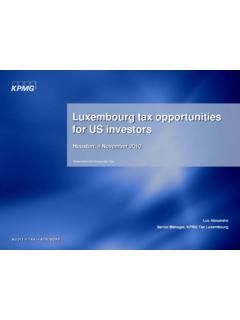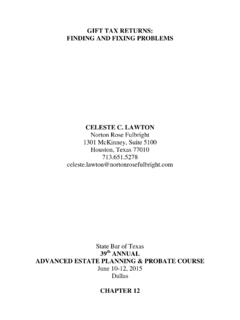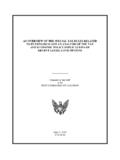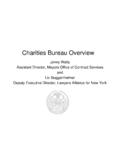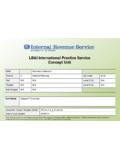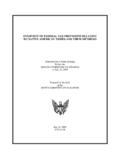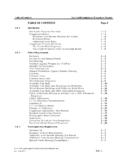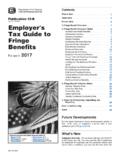Transcription of The Unified Loss Rules: An Overview - Texas Tax Section
1 The Unified loss rules : An OverviewTodd Way(214) 220-7942 / (713) 758-7942 Gieseke(713) 758-2053 forth herein is a summary of the Unified loss rules , and in particular the attribute reduction rules contained in Treas. Reg. (d), which are designed to prevent taxpayers from recognizing more than one tax loss with respect to a single economic loss . The attribute reduction rules can lead to surprising results and should be carefully analyzed to determine their potential application in connection with the purchase and sale of a corporation out of a consolidated group. Given the current natural resource commodity price environment, these rules will likely become increasingly relevant for certain M&Atransactions within the energy Background: The Unified loss rules are contained in Treas.
2 Reg. Proposed in January of 2007 and finalized September 17, 2008. They are the culmination of 20 years of notices, proposed, temporary and final regulations, court cases, and legislation, including: Notice 87-14, 1987 445. Numerous proposed, temporary, and final regulations. Rite Aid Corp v. , 255 (Fed. Cir. 2001). Section 646 of American Jobs Creation Act of For simplicity, assume the following unless otherwise indicated: Seller is the common parent of an affiliated group of corporations that have elected to file consolidated federal income tax returns (the Seller Group ). Target is a member of the Seller Group and is 100% directly owned by Seller. Buyer is a corporation that is not affiliated with the Seller Unified loss rules have two primary purposes: Preventing the consolidated return provisions from reducing Seller Group s consolidated taxable income through the creation and recognition of noneconomic loss on Target s stock (Treas.)
3 Reg. (a)(2)); and Preventing members (including former members) of a Seller Group from collectively obtaining more than one tax benefit from a single economic loss (Id.).5 Overview The Unified loss rules Contain Three Principal redetermination rule to reduce disparity in bases of subsidiary stock. Treas. Reg. (b). reduction rule to prevent noneconomic loss . Treas. Reg. (c). reduction rule to prevent loss duplication. Treas. Reg. (d). Each of the three rules , to the extent applicable, apply in the order set forth The Basis Redetermination Rule:Treas. Reg. (b)The Basis Redetermination Rule is designed to prevent prior adjustments made under Treas. Reg. from creating non-economic or duplicated losses where Seller (or other Seller Group members) hold Target shares with disparate bases.
4 The rule reallocates previously applied investment adjustments to reduce basis disparity among different classes or blocks of Target stock. Doesn t apply if there is no disparity among bases in Target s common shares and no member of the Seller Group owns preferred shares with an unrecognized gain or loss . Doesn t apply where all of Target s shares are sold to a non-member in a fully taxable The Stock Basis Reduction Rule:Treas. Reg. (c)The Stock Basis Reduction Rule is primarily designed to prevent the son of mirrors and similar transactions that the IRS thinks result in noneconomic losses. Son of Mirror Example: Seller purchases Target for $400 and files a consolidated return. Target has two assets (X and Y), each of which has a $200 value and $100 basis.
5 Seller only wants Asset X. Target distributes Asset X to Seller and then Seller sells Target s stock for $200. The distribution of Asset X results in $100 deferred intercompany gain (a DIG ) to Target and a $200 reduction Seller s basis in its Target stock. The DIG is triggered in connection with the stock sale, resulting in a $100 increase in Seller s stock basis under the investment adjustment rules . As a result, Seller recognizes a $100 loss on the stock sale, which offsets the gain recognized on the distribution of Asset X. The stock basis reduction rule prevents this result by reducing Seller s basis in the Target stock by the $100 positive investment The Attribute Reduction Rule:Treas. Reg. (d)The Attributed Reduction Rule is primarily intended to prevent recognition of more than one loss with respect to a single economic loss .
6 Unlike the prior temporary regulations, the final regulations do not trace losses. Basic Example of Problem: Seller buys Target s stock for $200, at which time Target s assets have a $200 basis and value. A year later, Target s assets have declined in value to $100. Before Target recognizes a loss on the assets for tax purposes, Seller sells Target s stock for $100. Absent the attribute reduction rule, Seller would recognize a $100 loss on its Target stock and Target would continue to have a $100 built-in loss that it could later recognize. Thus, there could be $200 of losses recognized even though the economic loss was only $ Attribution Reduction Mechanics If any transferred share remains a loss share after the application of the stock basis redetermination and reduction rules , Target s tax attributes are reduced by the attribution reduction amount.
7 Treas. Reg. (d)(2)(i). Attribute Reduction Amount = the lesser of (i) the net stock loss and (ii) the aggregate inside loss . (d)(3). Net stock loss = the excess, if any, of the aggregate basis of all Target shares transferred over the aggregate value of those shares. Aggregate Inside loss = the excess, if any, of Target s net inside attribute amount ( loss carryovers, plus deferred deductions, plus money, plus basis in assets other than money, minus liabilities) over the value of all outstanding Target shares. Complicated further if Target owns subsidiaries See Treas. Reg. (d)(5). Exception if the attribution reduction amount < 5% of the value of the shares transferred (unless Seller elects otherwise). Treas. Reg.
8 (d)(2)(ii).10 Default Attribution Reduction Mechanics, Continued Default Application of Attribution A: Capital loss carryovers (oldest to newest); B: NOL carryovers (oldest to newest); C: Deferred deductions (proportionately); D: Asset basis (other than cash and general deposit accounts). Treas. Reg. (d)(4). Seller can specify the allocation of the attribution reduction amount among attributes in Categories A, B, and C. Id. Asset basis cannot be reduced until all of the attributes in Categories A, B, and C are reduced in full. Attribution Reduction Mechanics, Continued Reduction of Target s Asset Basis. After reducing the attributes in Categories A, B, and C, any excess attribution reduction amount is applied to reduce the basis of Target s Category D assets.
9 The basis reduction is allocated between any stock of Target s subsidiaries, if any, and Target s other assets based on relative basis. Special rules apply to determine the deemed basis of Target s subsidiary stock. SeeTreas. Reg. (d)(5). The attribution reduction amount allocated to non-stock Category D assets are allocated to Target s Class VII, VI, V, IV, III, and II assets in reverse sequential order. Treas. Reg. (4)(ii)(B)(2). Basis of assets within a class are reduced Attribution Reduction Mechanics, Continued Reduction of Target s Asset Basis Cont. If the attribution reduction amount exceeds Target s attributes and Target has contingent liabilities, the excess is suspended and applied to any future attributes attributable to those liabilities.
10 Otherwise, the excess attribution reduction amount has no further effect. Treas. Reg. (d)(4)(iii). Attribute reductions are effective immediately before the transfer of Target s stock. Id. Any reduction of attributes are NOT noncapital, nondeductible expenses described in Treas. Reg. (b)(2)(iii). The point here is to prevent duplicative stock basis reductions under the investment adjustment Elections Under Treas. Reg. (d)(6) In lieu of the default attribute reduction rules described above, Seller can elect all or any portion of its basis in Target s shares ( , reduce its capital loss on the sale of Target); all or any portion of Target s Category A, B, and C attributes to the extent they would otherwise be reduced; combination of the above.
